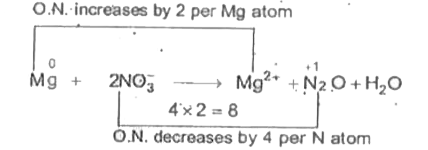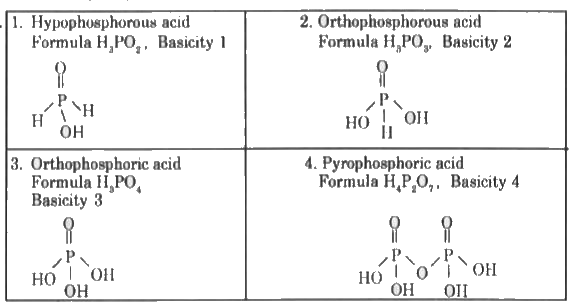InterviewSolution
This section includes InterviewSolutions, each offering curated multiple-choice questions to sharpen your knowledge and support exam preparation. Choose a topic below to get started.
| 9801. |
Which ion forms a hydroxide highly soluble in water ? |
|
Answer» `Ni^(2+)` |
|
| 9802. |
Zinc displaces copper from the solution of its salt because |
|
Answer» ATOMIC number of zinc is more than that of copper |
|
| 9803. |
To which of the following class of organic compounds does the soap belongs? |
|
Answer» Esters |
|
| 9804. |
When fluroide is heated with conc H_2SO_4 and MnO_2 the gas evolved is: |
|
Answer» HF |
|
| 9806. |
The total number of amino acids in insulin is …………………… |
|
Answer» 51 |
|
| 9807. |
What is renaturation? |
| Answer» SOLUTION :The REVERSAL of denaturation is KNOWN asrenaturation. As a result of denaturation, the PROTEIN undergoes changes physically and CHEMICALLY. | |
| 9808. |
When ether is exposed in air for sometime in explosive substance produced is |
|
Answer» peroxide |
|
| 9809. |
Which one the following compound when heated with KOH and primary amines give carbylamine test : |
|
Answer» `CHCl_3` |
|
| 9810. |
Which is not an ore of gold ? |
|
Answer» Syvanite |
|
| 9811. |
Which of the following compound reacts with acetic anhydride to produce a compound which is a pain killar and antipyretic? |
|
Answer» OXALIC acid |
|
| 9813. |
Which of the following will give characteristic colour with FeCl_(3)? |
|
Answer»
|
|
| 9814. |
Write the skeleton equation for the followingchemical reaction and balance them by oxidation number method : (i) Chloride ions reduce manganese dioxide to manganese (II) ions in acidic medium and get itself oxidized to chlorine gas . (ii) The nitrate ions in acidic medium oxidize magnesium to Mg^(2+) ions but itself gets reduced to nitrous oxide . |
|
Answer» Solution :(i) The skeleton EQUATION for the given process is `MnO_(2) + Cl^(-) to Mn^(2+) + Cl_(2) + H_(2)O` Step (1) : `overset(+4)Mnoverset(+2)O_(2) + Cl^(-) to Mn^(2+) + overset(0)Cl_(2) + overset(+1)H_(2) overset(-2)O` Step (2) :  Step (3) : Equalize the increase/decrease in O.N. by multiplying `MnO_(2) " by 1 and" Cl^(-) " by " 2 ` ` MnO_(2) + 2Cl^(-) to Mn^(2+) + Cl_(2) + H_(2)O` Step (4): Balanceother atoms except H and O. Here they are all balanced . Step(5) : Balance O atoms by adding `H_(2)O` molecules to the SIDE falling short of O atoms `MnO_(2) + 2Cl^(-) to Mn^(2+) + Cl_(2) + H_(2)O + H_(2)O` Step (6) : Balance H atoms by adding `H^(+)` ions to the side falling short of H atoms. `MnO_(2) + 2Cl^(-) + 4H^(+) to Mn^(2+) + Cl_(2) + 2H_(2)O` (ii) The skeleton equation for the given process is `MG + NO_(3)^(-) to Mg^(2+) + Na O + H_(2)O` Step (1) : `overset(0)Mg + (overset(+5)Noverset(-2)O_(3))^(-) to Mg^(2+) + overset(+1)N_(2) overset(-2)O + overset(+1)H_(2) overset(-2)O ` Multiply `NO_(3)^(-)` by 2 to equalize N atom Step (2) :  Step (3) : Equalize increase /decrease in O.N. by multiplying Mg by 4 and `2NO_(3)^(-)` by 1 . `4Mg + 2NO_(3)^(-) to 4Mg^(2+) + N_(2)O + H_(2)O` Step (4) : Balance atoms other than O and H `4Mg + 2NO_(3)^(-) to 4Mg^(2+) + N_(2)O + H_(2)O` Step (5) : Balance O atoms `4Mg + 2NO_(3)^(-) to 4Mg^(2+) + N_(2)O + H_(2)O + 4H_(2)O` Step (6) : Balance H atoms as is done in acidic medium `4Mg + 2NO_(3)^(-) + 10H^(+) to 4Mg^(2+) + N_(2)O + 5H_(2)O` |
|
| 9815. |
Which of the following will not show coupling reaction with benzenediazonium chloride? |
|
Answer» Aniline |
|
| 9816. |
Write the structure of the alkene formed by dehydrohalogenation of I-bromo methyl cyclohexane with alcholie KOH |
Answer» SOLUTION :
|
|
| 9817. |
Write three points of difference between sols and emulsions. |
| Answer» | |
| 9818. |
Which of the following is most polarised |
| Answer» Solution :Xe is highly POLAR SINCE the ionisation potential of xenone is quiteclose to the ionisation potential of oxygen. | |
| 9819. |
The reagent used in the conversion of phenol to 1, 4 -benzo quinone is ………………………. . |
| Answer» SOLUTION :ACIDIFIED `K_2Cr_2O_7` | |
| 9820. |
Which alkyl halide has the highest density and why? |
| Answer» SOLUTION :`CH_(3)I`, because of its LOWEST carbon CONTENT and heaviest halogen i.e., I. | |
| 9821. |
When a buffer solution of sodium acetate and acetic acid is diluted with water |
|
Answer» ACETATE ion CONCENTRATION increases |
|
| 9822. |
What happens when benzoic acid is added to benzene ? |
| Answer» Solution :Benzoic ACID MOLECULES diamerise due to HYDROGEN BONDING. | |
| 9823. |
Where among the following metal complexes the one which exhiibits optical activity is: (AA=bidentate ligand, A, X=monodentate ligand) |
|
Answer» CIS-`[MA_(4)X_(2)]` |
|
| 9824. |
Which compound has identical C-C bond length. |
|
Answer»
 has IDENTICAL C- C bond length due to negative CHARGE PARTICIPATE in reso and molecule GET aromaticity. has IDENTICAL C- C bond length due to negative CHARGE PARTICIPATE in reso and molecule GET aromaticity. 
|
|
| 9825. |
Which of the following Group 2 metal hydroxides is soluble in sodium hydroxide ? |
|
Answer» `Be(OH)_(2)` |
|
| 9826. |
Which of the following is an example of ambidentate ligand |
|
Answer» `CO` |
|
| 9827. |
Which is correct order of stability of free Radical? |
|
Answer»
|
|
| 9829. |
(X) is very important laboratory reagent which is prepared by its naturally occurring ore which is called pyrolusite. Pyrolusite when fused with alkali in the presence of O_(2), green compound (Y) is produced. (Y) is converted into (X) by electrolysis or by using ozone. Q. Select the correct statements. |
|
Answer» (X) is TETRAHEDRAL and diamagnetic |
|
| 9830. |
What is tincture of iodine? What is its use ? |
| Answer» Solution : 2-3% solution of IODINE in ALCOHOL and WATER is called tincture of iodine. It is a powerful antiseptic. It is APPLIED on wounds | |
| 9831. |
(X) is very important laboratory reagent which is prepared by its naturally occurring ore which is called pyrolusite. Pyrolusite when fused with alkali in the presence of O_(2), green compound (Y) is produced. (Y) is converted into (X) by electrolysis or by using ozone. Q. On small scale (X) is prepared by disproportionation of (Y) is acidic solution. which of the following is produced by disproportionation of (Y) in slightly alkaline solution. |
|
Answer» `KMnO_(4),Mn^(+2)` |
|
| 9832. |
Which compound will not give positive chronyl chloride test: |
|
Answer» COPPER chloride `CuCl_(2)` |
|
| 9833. |
The vapour pressure of a dilute solution of glucose (C_(6)H_(12)O_(6)) is 750 mm Hg at 373K . Calculate (i) molality and (ii) mole fraction of the solute. |
| Answer» SOLUTION :MOLE FRACTION of SOLUTE `=(N)/(n+N) | |
| 9834. |
Which of the following reactions is correct? |
|
Answer» a. c. `LAH` REDUCES `(-CHO)` group to alcohol without affecting the `(C=C)` bond. So, the statement `(c )` is WRONG. d. ETHERS are obtained (Williamson synthesis) when `1^(@) RX` reacts with `3^(@)` alkoxide. In the problem, `3^(@) RX` reacts with `1^(@)` alkoxide. So alkene will be obtained. So, the statement `(d)` is wrong, and consequently the answer is `(b)`. |
|
| 9835. |
Zn, Cd, Hg belong to d-block elements even though they do not have partially filled d-orbitals. Give reason. |
|
Answer» Solution :(i) Zn, Cd, Hg belong to d-block ELEMENTS even though they do not have partially filled d-orbitals EITHER in their elemental state or in their normal oxidation STATES. (ii) HOWEVER they are treated as transition elements, because their PROPERTIES are an extension of the properties of the respective transition elements. |
|
| 9836. |
Which detergent is useful for domestic purpose ? |
|
Answer» ANIONIC |
|
| 9837. |
Which of the following is not a biodegradable polymer ? |
|
Answer» PHBV |
|
| 9838. |
Which of the following pairs of cations can be separated by using dilute HCl in cold conditions? |
|
Answer» `AG^(+), Cu^(2+)` |
|
| 9839. |
Using IUPAC norms, write the systematic names of the following: [Ti(H_(2)O)_(6)]^(3+) |
| Answer» SOLUTION :Hexaaquatitanium(III) ION | |
| 9840. |
Which one of the following pairs of substances on reaction will not evolve H_(2) gas ? |
|
Answer» Iron and `H_(2)SO_(4)` (aq)? |
|
| 9842. |
Which one of the following is not a coordination compound ? |
|
Answer» `K_(3)[Fe(CN)_(6)]` |
|
| 9843. |
Write the correct IUPAC name of the following compounds. (i) |
Answer» 
|
|
| 9844. |
What should be added to reduce the intensity of colour in coloured solution ? |
|
Answer» SALT |
|
| 9845. |
Write the IUPAC name for the following compouns. (i)K_2 [Fe(CN)_3(Cl)_2( NH_3) ] (ii)[Cr(CN)_2(H_2O) _4][CO(o x)_2(3n) ] (iii)[Cu(NH_3) _3Cl_2] (iv) [Cr(NH_3)_3 (NC)_2(H_2O)]^(+) (v)[Fe(CN)_6]^(4-) |
|
Answer» Solution :Potassium monoamminedichlorotricuano ferrate (III) (ii). Tetraaquadicyanido CHROMIUM (II) mono (ethylene DIAMINE ) dioxalato cobaltate (IV) (iii) diammine DICHLORO COPPER (II) (iv) Trimmine monoqua di isocyanido KN-chrommium (III) ion. (V) Hexacyano Ferrate (II) ion. |
|
| 9846. |
Write the structure for the following oxoacids of phosphorus. (i) Hypophosphorousacid (ii) Orthophosphorous acid (iii) Orthophosphoric acid (iv) Pyrophosphoric acid |
Answer» SOLUTION :
|
|
| 9847. |
Which series of elements would have nearly the same atomic radii ? |
| Answer» Answer :A | |
| 9848. |
Write the hydrolysed product of : (i) Maltose(ii) Cellulose |
| Answer» SOLUTION :(i) `ALPHA`-D-glucose(II) `BETA`-D-glucose | |
| 9849. |
What product is formed by mixing the solution of K_(4)[Fe(CN)_(6)] with the solution of FeCl_(3) |
|
Answer» Ferro-ferricyanide |
|
| 9850. |
Washing soap can be prepared by saponification with alkali of which of the following oil |
|
Answer» Rose oil |
|